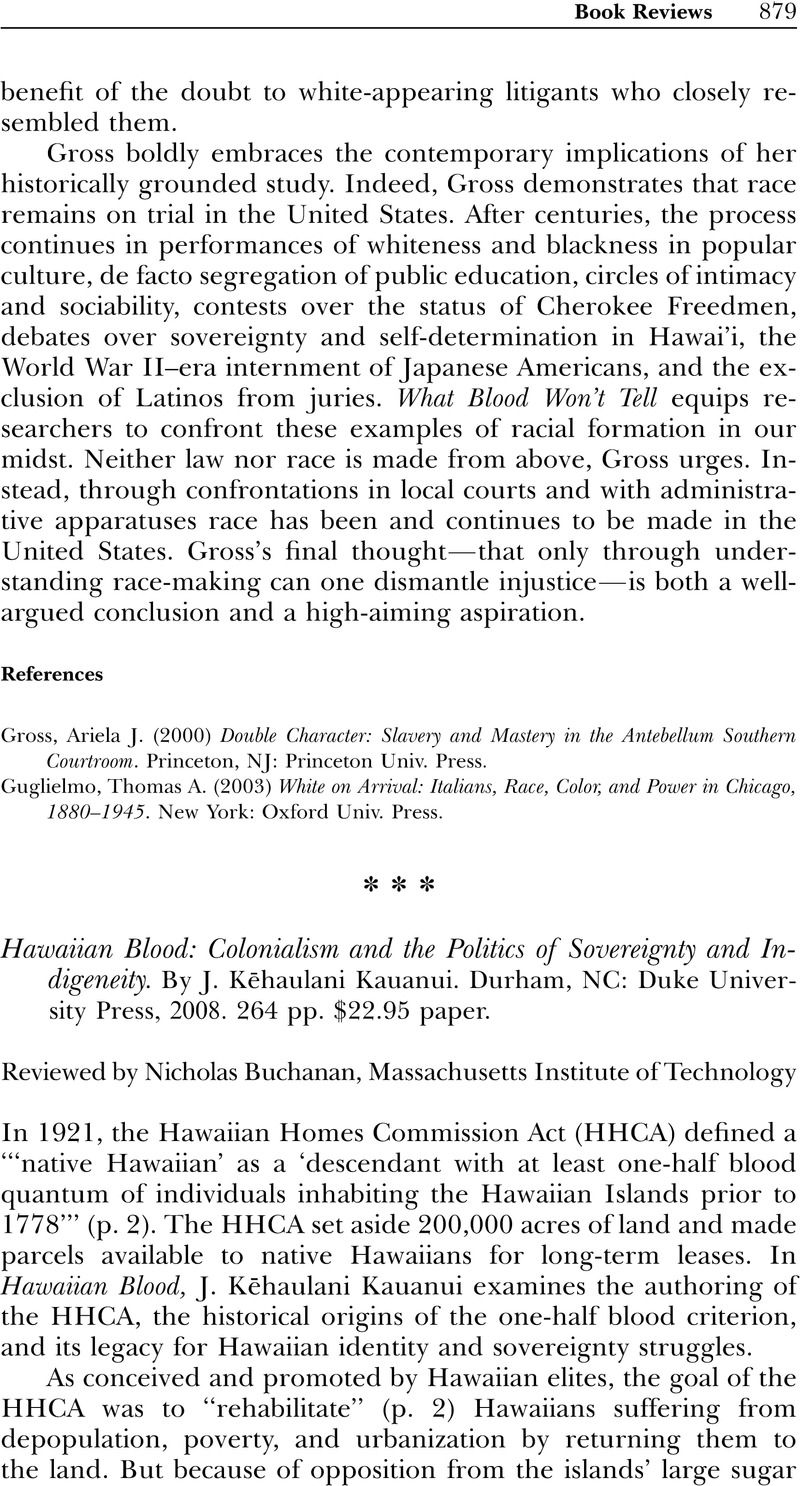No CrossRef data available.
Article contents
Hawaiian Blood: Colonialism and the Politics of Sovereignty and Indigeneity. By J. Kēhaulani Kauanui. Durham, NC: Duke University Press, 2008. 264 pp. $22.95 paper.
Review products
Hawaiian Blood: Colonialism and the Politics of Sovereignty and Indigeneity. By J. Kēhaulani Kauanui. Durham, NC: Duke University Press, 2008. 264 pp. $22.95 paper.
Published online by Cambridge University Press: 01 January 2024
Abstract
An abstract is not available for this content so a preview has been provided. Please use the Get access link above for information on how to access this content.

Information
- Type
- Book Reviews
- Information
- Copyright
- © 2010 Law and Society Association.

